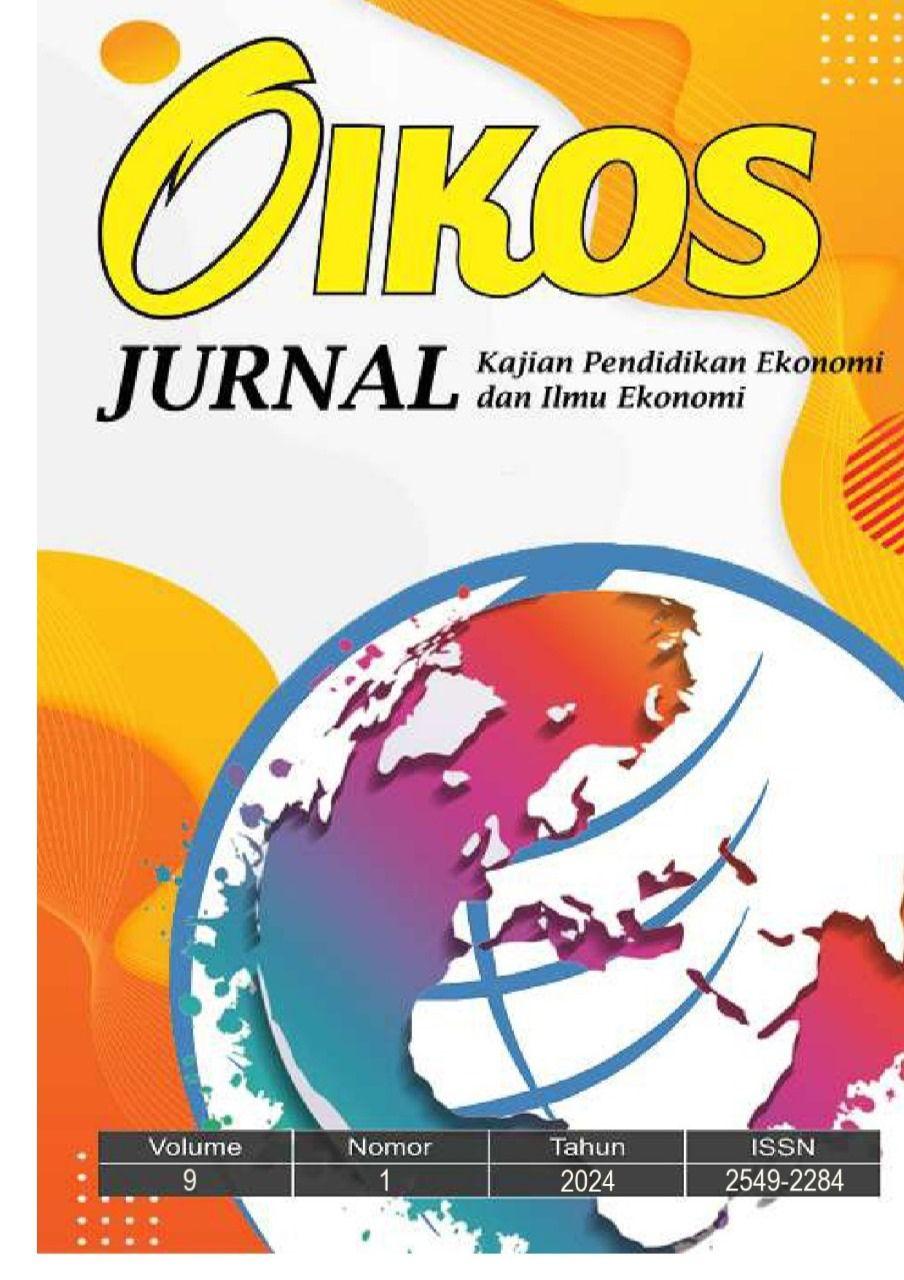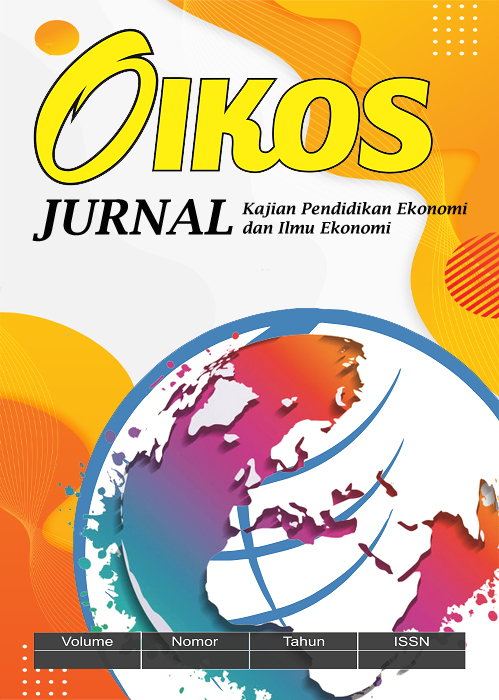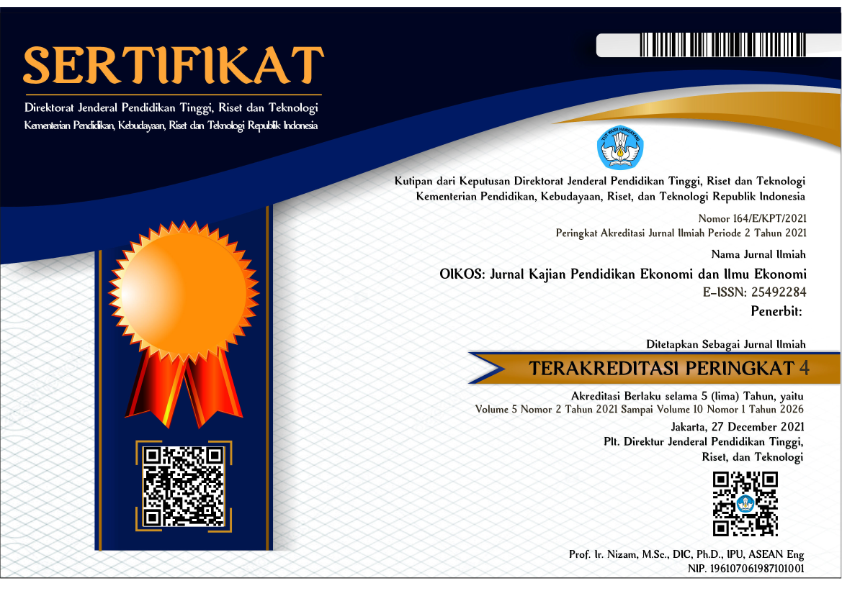PERAN INKLUSI KEUANGAN TERHADAP PEMBANGUNAN EKONOMI: STUDI KASUS KAWASAN ASEAN-2
Keywords:
economic development, financial inclusionAbstract
Financial inclusion refers to a condition where every member of society has access to various formal financial services. Easy access to financial products and services is expected to provide great opportunities for both companies and households to increase income and independence which has a positive impact on the development economy. Each country has different financial inclusion policies according to the economy and socio-cultural characteristics, but has the same goal, namely to develop the economy and reduce poverty. Given the importance of cooperation that has been carried out by ASEAN member countries in increasing financial inclusion through Digital Financial Services (DFS), this study will analyze the role of financial inclusion in economic development in the ASEAN region. Therefore, various variables are studied in this study, including the number of bank branches, the number of ATMs, and domestic credit which are indicators of financial inclusion and the economic development index as dependent variables. The analysis in this study uses quantitative analysis with the panel regression analysis method. The data used in this study uses the period from 2009-2020. The countries used in the analysis of this study come from 8 member countries that are members of ASEAN. The results of the analysis found that financial inclusion has an impact on economic development, this is reflected in the variables of the number of ATMs, the number of bank branches and domestic credit which have a significant impact on economic development
Downloads
References
Abu, N. I. (2024). FINANCIAL INCLUSION AND ECONOMIC DEVELOPMENT. African Banking and Finance Review Journal, 13(13), 43-62.
Adaramola, A. O., & Dada, O. (2020). Impact of inflation on economic growth: evidence from Nigeria. Investment Management & Financial Innovations, 17(2), 1.
Adedokun, M. W., & Ağa, M. (2023). Financial inclusion: A pathway to economic growth in Sub‐Saharan African economies. International Journal of Finance & Economics, 28(3), 2712-2728.
Adelam, I., (2000). Fifty Years of Economic Development: What Have We Learn?. Working Paper: World Bank
Ali, S., Ali, A., & Amin, A. (2013). The impact of population growth on economic development in Pakistan. Middle-East Journal of Scientific Research, 18(4), 483-491.
Arandara, R., & Gunasekera, A., (2020). Financial Inclusion and Inclusive Growth: What Does It Mean for Sri Lanka?. Policy Research Working Paper. World Bank
Beck, T. 2015. “Microfinance: A Critical Literature Survey.” Independent Evaluation Group, World Bank Group, Washington, DC
Cabeza-García, L., Del Brio, E. B., & Oscanoa-Victorio, M. L. (2019, November). Female financial inclusion and its impacts on inclusive economic development. In Women's Studies International Forum (Vol. 77, p. 102300). Pergamon.
Cicchiello, A. F., Kazemikhasragh, A., Monferrá, S., & Girón, A. (2021). Financial inclusion and development in the least developed countries in Asia and Africa. Journal of Innovation and Entrepreneurship, 10, 1-13.
Demirguc-Kunt, A., Klapper, L., &Singer, D., (2017). Financial Inclusion and Inclusive Growth. Policy Research Working Paper. World Bank
Hermawan, A., Gunardi, A., & Sar, L.M., (2022). Intention to Use Digital Finance MSMEs: The Impact of Financial Literacy and Financial Inclusion. Jurnal Ilmiah Akutansi dan Bisnis. 17 (1)
Ifediora, C., Offor, K. O., Eze, E. F., Takon, S. M., Ageme, A. E., Ibe, G. I., & Onwumere, J. U. (2022). Financial inclusion and its impact on economic growth: Empirical evidence from sub-Saharan Africa. Cogent Economics & Finance, 10(1), 2060551.
Karki, S., Banjara, S., & Dumre, A. (2020). A review on impact of inflation on economic growth in Nepal. Archives of Agriculture and Environmental Science, 5(4), 576-582.
Kasidi, F., & Mwakanemela, K. (2013). Impact of Inflation on Economic Growth: A Case Study of Tanzania. Asian Journal of Empirical Research, 3(4), 363-380.
Khursanaliev, B. (2023). The impact of population growth on the country's economic development. Qo ‘qon universiteti xabarnomasi, 1, 8-11.
Morgan, P.J., & Pontines, P., (2014). Financial Stability and Financila Inclusion. ADBI Working Paper Series
Otoritas Jasa Keuangan., (2021). 2021 – 2025 National Strategy on Indonesian Financial Literacy.
Sarma, M., & Pais, J. (2011). Financial inclusion and development. Journal of international development, 23(5), 613-628.
Tartiyus, E.H., Dauda, M.I., & Peter, A. (2015). Impact of Population Growth on Economic Growth in Nigeria (1980-2010). IOSR Journal of Humanities and Social Science, 20(4), 115-123.
UNCTAD (2021). Financial Inclusion for Development: Better Access to Financial Services for Women, the Poor and Migrant Workers
Van, D.T.T., & Linh, N.H., (2019). The Impacts of Financial Inclusion on Economic Development: Cases in Asian-Pacific Countries. Comparative Economic Research Central and Eastern Europe. 22 (01)
World Bank (2022a). Advancing Digital Financial Inclusion in ASEAN: Policy and Regulatory Enablers
World Bank (2022b). The Global State of Financial Inclusion & Consumer Protection
World Economic Forum (2022). ASEAN Digital Generation Report: Digital Financial Inclusion
Downloads
Published
Issue
Section
License
Copyright (c) 2025 OIKOS: Jurnal Kajian Pendidikan Ekonomi dan Ilmu Ekonomi

This work is licensed under a Creative Commons Attribution 4.0 International License.









